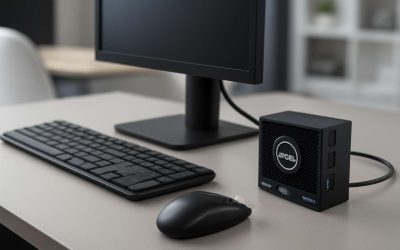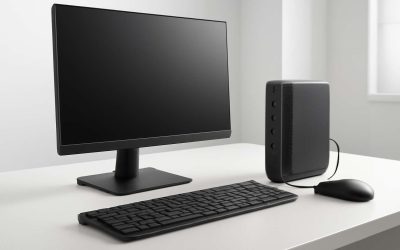
Thin client pc are computers that run on very little and connect to a central server to access software applications that are resident on the server. They use much less power than desktop computers and have minimal hardware, such as low-energy processors, minimal levels of RAM, and limited hard drive space. They are typically fanless and can be placed in ventless spaces or in harsh environments.
While thin clients were originally used for remote workers, they are also popular in schools and libraries to control student computer environments, as well as offer a secure way to access applications in the cloud. They are also a popular choice for healthcare, where data is collected and analyzed on centralized servers. However, they are most often deployed in large enterprise organizations. The primary benefits of a thin client environment are cost savings, easy manageability, and enhanced security.
Because the hardware is so light, it requires less maintenance than a regular PC. Hardware manufacturers can also sell them at a lower price because they don’t have to include high-end graphics cards, powerful processors, or extensive storage and memory. The lack of these components reduces the overall cost of the device to the company, which can then pass the savings on to end users.
These devices are connected to a central system via a network connection, which can be either wired or wireless. This can be done with dedicated thin client hardware, like Teradici’s “Zero Client” line of devices; add-on cards that convert a standard desktop into a thin client, such as Leadtek’s Virtual Desktop System lineup; or with software, including VMware’s View 4 application. The central server can be running Windows, Linux, or Solaris OS, and the hardware client can support local printing, device connections, web browsing, and network computing.
The fact that all data and the operating system are stored on the server prevents the device from being infected with malware in the same manner as a traditional desktop computer. The system can also be protected by the same firewalls that protect the server. This includes the ability to block USB ports and other tampering.
In addition, the centralized authentication system in a thin client environment eliminates user confusion by forcing the use of one username and password for all applications. This helps reduce human error that could lead to an attacker gaining access to an organization’s sensitive information.
Despite these benefits, some organizations are still wary of deploying thin and zero clients because of the potential for slow performance in a wireless network. The truth is, most of these worries are unfounded. Today’s broadband networks can support a high level of thin and zero client applications, even in high-definition videoconferencing. Additionally, most of the time that a device is not able to handle the workload, it will request help from the central server instead. The result is a seamless experience for the user. Lastly, a number of migration tools are available to help ease the process for an IT team that wishes to switch to a thin and zero client environment.



0 Comments